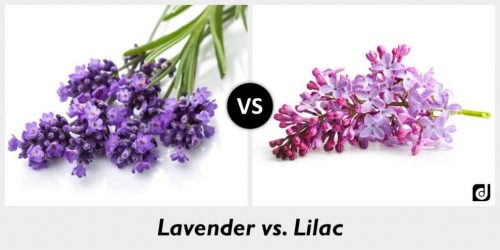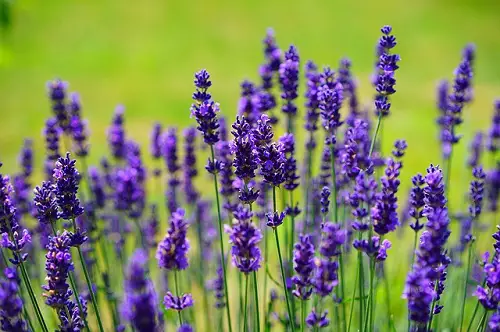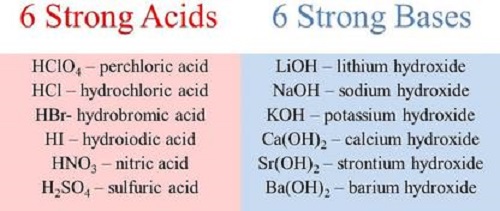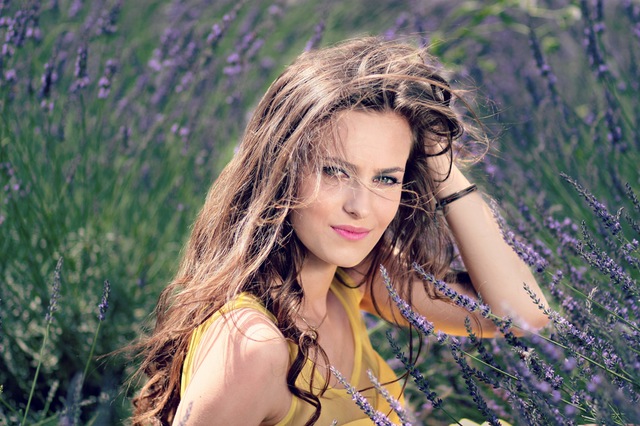
The battle between the purple beauties is on. Often people confuse the two which is understandable because from an unsuspecting admirer’s view point, the two look identical. One will ask “aren’t they the same” or assert “They look identical to me”. Well, not really. Yes, lavender and lilac are similar however they are not the same thing. Their primary difference lies in between their shade. On one hand, a lavender is pale purple with a ‘bluish’ hue and on the other hand, a lilac is a pale purple with a ‘pinkish’ hue. In this article we will be looking at the differences between lavender and lilac.
-
LAVENDER
- Flower:
- Definition: The term lavender is a common name. In the field of botany, the flower has been given a scientific term: Lavunda[i]. A beautiful name for a beautiful flower. Lavender flower belongs to Lamiaceae, which is an olive family[ii]. Lavender is a flowering plant. The lavender grows in the northern parts of Europe, the Mediterrian, eastern Africa and northwest Asia to southeast India. In essence, lavender flowers need suitable conditions such as dry areas with sun exposed areas in order to grow.
- Description: Lavender has an appearance of a small shrub with gray, linear leaves with hues ranging from blue to violet. These leaves grow in compact or uninterrupted spikes[iii]. So as you have guessed it or not, lavender flowers bloom in various shapes and sizes. They are produced on long spikes and in some occasions short stems[iv]. The leaves too can come in different shapes. They can be long, short, narrow and fern-like. Flowers can be compact, round and pineapple shaped with bunny ear tufts on top or the flower buds can be spread out loosely over 3-4 inches of stem[v].
- Color:
Most are familiar with only the purple shade of lavender. However, lavender does not come in only purple shade. There are many lavender color choices which include pink, red, green and white. When it comes to paint, the color is made by mixing purple with white. Lavender is a light purple with a bluish hue.
- Scent:
Lavender has a light and fresh, floral but not overwhelmingly heavy. It is pleasant and very much pleasing.
- Properties of lavender:
Since the ancient times, lavender has been used as a relaxing herb in bathrooms. The use of lavender oil would be added to bathing water by the Romans[vi]. Other uses:
- Helping in birth. Back in the day, women would grab on the branches of the plant because they believed it would help with the baby’s birth.
- Helps with sleeping: the leaves of this plant were plucked and placed under the pillows.
Essentially, lavender is an aromatic, tonic herb with a sweet scent. It relaxes spams, influences digestion, stimulates peripheral circulation and lowers fever.
- Symbolism:
Lavender flower in our society is associated with many things such as Purity, silence, devotion, grace and calmness. Lavender is purple in color and the color is often associated with royalty, nobility, power and ambition.
-
LILAC
- Flower:
- Definition: Similar to the lavender, Lilac flower also has a scientific name which common amongst botanists. It is known as Syringa and it is part of the olive family – Oleaceae[vii] . Areas such as the southeastern Europe and eastern Asia are native to the lilac flowers
- Description: Lilacs can be described as small trees, ranging in sizes from 2 to 10 meters. Only a few of them are tree-like and the majority of them are shrubs. The common lilac bears big, simple opposite leaves without any tooth[viii]. Some maybe small, lobed and compounded. Individual lilac flowers are called florets and compromise of four petals.
- Color:
Lilac is the name of the flower after which the color has been named[ix]. It is pale violet and sometimes can be described as light purple with a pinkish hue. The variations of lilac are pale lilac, bright lilac, rich lilac and French lilac.sc
- Scent:
The scent of a lilac is different from the one of lavender. It is more deeply and richly floral. Its scent is similar to one of a rose with traces of vanilla. It is an excellent choice for one who prefers stronger perfumes. The fragrance lilac may vary depending on the time of day and the stage of blooming. The most intense fragrance of a lilac is apparent on warm and sunny days.
- Properties of lilac:
The lilac flower has been used over the centuries for medicinal purposes. They were used as medication to treat parasitical intestinal worms and to reduce fever[x] .
- Symbolism:
Lilacs are said to stand for confidence and sometimes symbolize pride and youthful innocence. Because lilacs bloom so early, they are strong associated with renewal, spring and fresh starts.
Lavender and lilac are two shades of purple. They are very similar to each other and in many instances the two shades tend to confuse people. These two terms refer to flowers of the same name.
SUMMARY
| Flower | Color | Scent | Properties | Symbolism | |
| LAVENDER | Grow in whorls, held on spikes rising above the foliage | Pale purple with bluish hue. | Light and fresh aroma. | Relaxing herb for bathing. | Grace and calmness. |
| LILAC | Grow in large pinnacles | Pale purple with pinkish hue. | Deeply and richly floral. | Treat parasitical intestinal worms. | Confidence, pride and youthful. |












Leave a Reply